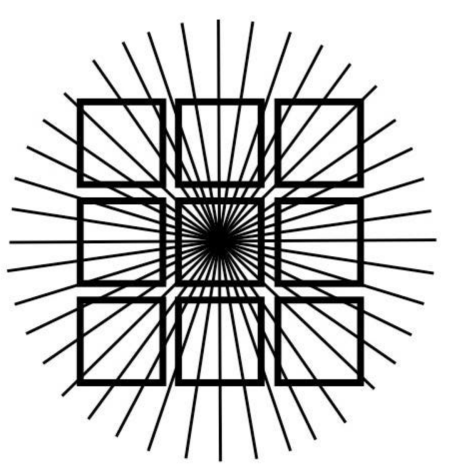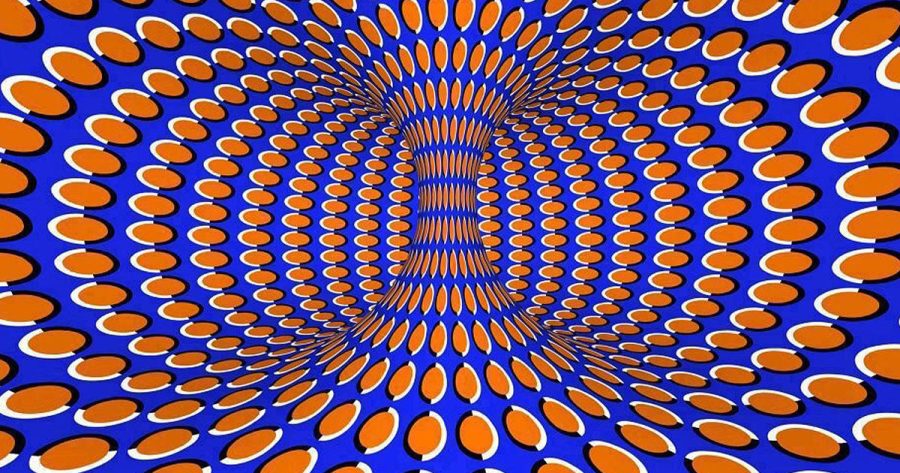When Seeing Isn’t Believing: Optical Illusions and the Quirks of our Brains
A colorful geometric illusion confuses the mind into seeing 3D motion.
From static 2D scenes, humans can conjure pulsing swirls, moving neon dots, and three-dimensional spheres. This isn’t a trick from a sci-fi film, but rather the magic of optical illusions, mind-bending images that trick our visual systems into perceiving elements different from reality. The dizzying motions and unusual perspectives of optical illusions, from shimmery upward-flowing waterfalls to viral internet memes (was that dress blue or gold?), have fascinated humans for centuries. But why exactly do optical illusions fool us?
Neurobiologists at the California Institute of Technology may have found the answer to the puzzle of optical illusions – and it lies in the quirks of the communication system between our eyes and brain. To visually experience the world around us, our eyes first take in photons, particles of light, that are reflected from our surroundings. Because the original snapshot from our eyes is murky and undeveloped, visual information is then sent through electric signals to the brain’s visual cortex for image processing, with colors, shapes, and motions interpreted for the final image we perceive. Because this process of visualization is so complex, image processing takes time. This leads to a visual “neural delay,” where there is about 100 milliseconds of lag time – about as long as one blink of an eye – between when a scene enters our eyes and when it is perceived by our brain. In other words, our perception always lags behind reality!
To compensate for this delay and respond to present events, our brain uses the visual information we have already processed about the past (100ms ago) to constantly predict what is happening during the present. For instance, we infer that a ball, thrown from the left in our line of vision, continues moving to the right.

Usually our brain’s prediction capabilities are pretty foolproof. However, researchers believe that our brain’s erroneous predictions are the primary reason we are so susceptible to optical illusions. For instance, suppose you are shown a video in which an object moves from left to right and passes a flashbulb. At the exact time the object passes the flashbulb, the bulb flashes. You, however, likely perceive the bulb as flashing after the object has moved past the bulb. The brain sees the moving object and interprets it as moving; given the information about the object moving, the brain guesses ahead for an accurate prediction of the object’s present location, placing the location of the object farther to the right than it actually is at the time of the bulb flash.
While the kaleidoscopic shapes and colors of our common optical illusions may only seem like childish amusement, they show that our visual system is not foolproof – it’s even outsmarted by some simple lines, shapes, and concentric circles. Next time, look twice at what you see, because seeing isn’t believing!
—
Works Cited
https://www.nytimes.com/2008/06/10/health/10iht-10mind.13598228.html
https://ed.ted.com/lessons/why-do-we-see-illusions-mark-changizi#digdeeper
https://onlinelibrary-wiley-com.stanford.idm.oclc.org/doi/full/10.1080/03640210802035191
https://science.howstuffworks.com/optical-illusions.htm

